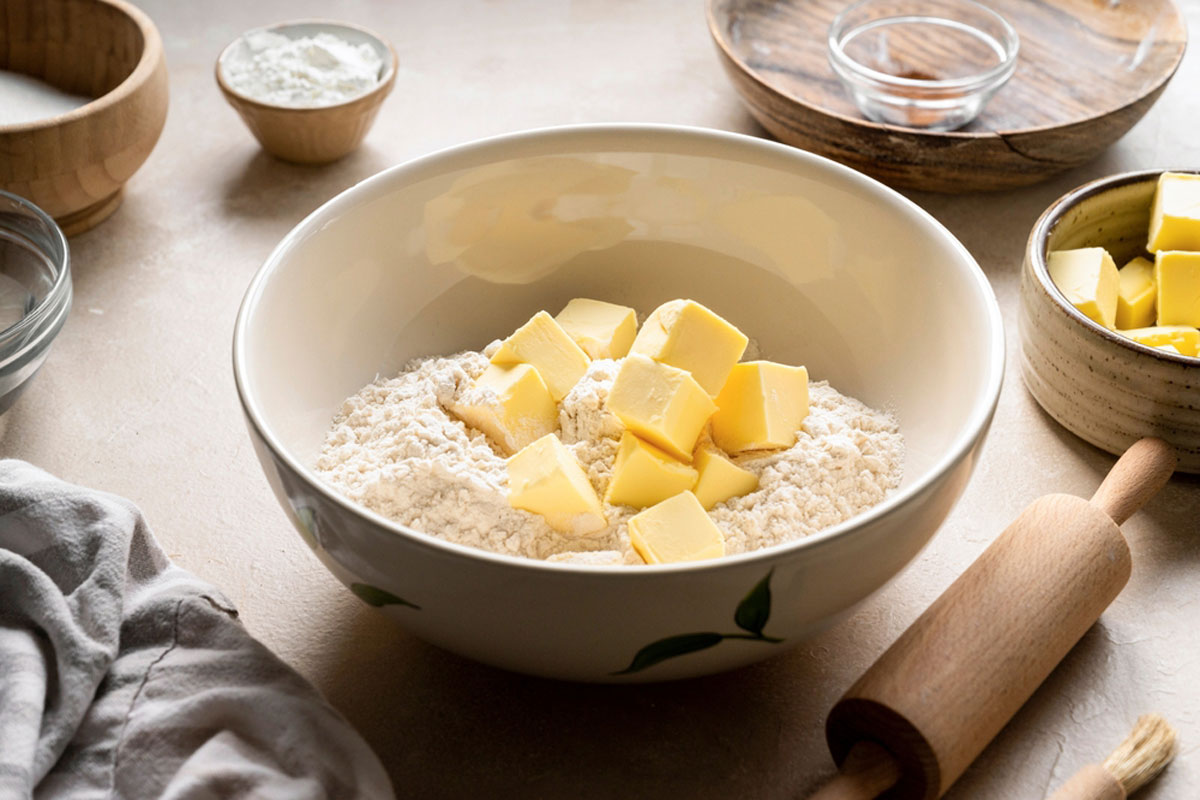When it comes to baking cookies, butter is one of the most essential ingredients. Its impact on texture, flavor, and structure is unparalleled, making it a cornerstone of cookie recipes. Understanding how butter functions and how different techniques affect the final product can help you master the art of cookie baking.
The Science of Butter
Butter is a dairy product made from churning cream. It typically contains about 80% fat, with the remaining 20% consisting of water and milk solids. This composition plays a crucial role in how butter behaves in cookie dough.
- Fat Content: The fat in butter adds richness and contributes to a tender crumb by coating the flour proteins, reducing gluten formation.
- Water Content: The water in butter helps create steam during baking, which can contribute to the leavening process and influence the texture of cookies.
- Milk Solids: These caramelize during baking, adding a golden-brown color and enhancing the flavor of cookies.
Butter’s Role in Cookie Texture
Butter’s state and how it is incorporated into the dough determine the texture of your cookies. Here are the key techniques and their impact:
- Creamed Butter: Creaming butter with sugar aerates the dough by incorporating tiny air pockets, which expand during baking. This method produces cookies with a light, fluffy texture and some rise, such as chocolate chip cookies.
- Melted Butter: Using melted butter leads to a denser cookie because it mixes thoroughly with the other ingredients, eliminating air pockets. This is ideal for chewy cookies.
- Cold Butter: Incorporating cold butter into the dough, as in some shortbread recipes, creates flaky, crumbly cookies. The butter stays solid longer during baking, contributing to a tender texture.
Butter’s Impact on Flavor
Butter imparts a rich, creamy flavor that is hard to replicate with other fats. Its unique ability to caramelize during baking enhances the cookies’ depth and sweetness. Additionally, butter serves as a medium for dissolving and distributing flavors from other ingredients, such as vanilla or spices, throughout the dough.
Substituting Butter in Cookies
While butter is often irreplaceable, certain recipes may call for substitutes due to dietary restrictions or flavor preferences. Common alternatives include:
- Margarine: Has a similar fat content but lacks the rich flavor of butter. It may also produce a softer, less crisp texture.
- Vegetable Shortening: Produces cookies that are tender and hold their shape well but lack the buttery flavor.
- Coconut Oil: Adds a unique taste and can mimic butter’s texture in some recipes.
- Plant-Based Butters: These are great for vegan baking but vary in fat and water content, so results can differ.
Temperature Matters
Butter’s temperature significantly affects cookie dough and the baking process:
- Room-Temperature Butter: Perfect for creaming with sugar. It should be soft but not melted, typically around 65-68°F.
- Cold Butter: Used for crumbly or flaky textures. It’s often cut into the flour to ensure minimal melting before baking.
- Melted Butter: Helps create dense and chewy cookies but must be cooled slightly before mixing to prevent scrambling eggs.
Butter and Spreading
The consistency of butter also impacts how much cookies spread during baking:
- Softened Butter: Promotes even spreading and a balanced shape.
- Melted Butter: Leads to more spreading due to its liquid state.
- Cold Butter: Limits spreading, maintaining a thicker cookie.
To control spreading, chilling the dough after mixing is recommended. Chilling solidifies the butter, slowing its melting in the oven and giving the cookies a chance to set before they spread too much.
Tips for Perfect Butter Usage in Cookies
- Measure Accurately: Use a kitchen scale to ensure precise measurements, as too much or too little butter can alter the texture.
- Choose the Right Butter: Unsalted butter is preferred for baking, as it allows better control over the salt content. High-fat European-style butter can add extra richness.
- Mix Wisely: Overmixing butter can lead to excess gluten development, resulting in tougher cookies.
- Adapt to Climate: In warm environments, butter softens quickly. Work quickly to avoid overly sticky dough.
Experimenting with Butter in Cookie Recipes
To truly understand butter’s role, experiment with small changes in your recipes:
- Use browned butter to enhance the nutty, caramelized flavor.
- Try reducing butter slightly for crispier cookies.
- Add an extra tablespoon for softer, more tender cookies.
Conclusion
Butter is the heart of many cookie recipes, providing flavor, texture, and structure. By understanding its properties and how to manipulate them, you can achieve your desired cookie results every time. Whether you prefer soft and chewy or crisp and delicate cookies, butter is the key to unlocking baking perfection.

